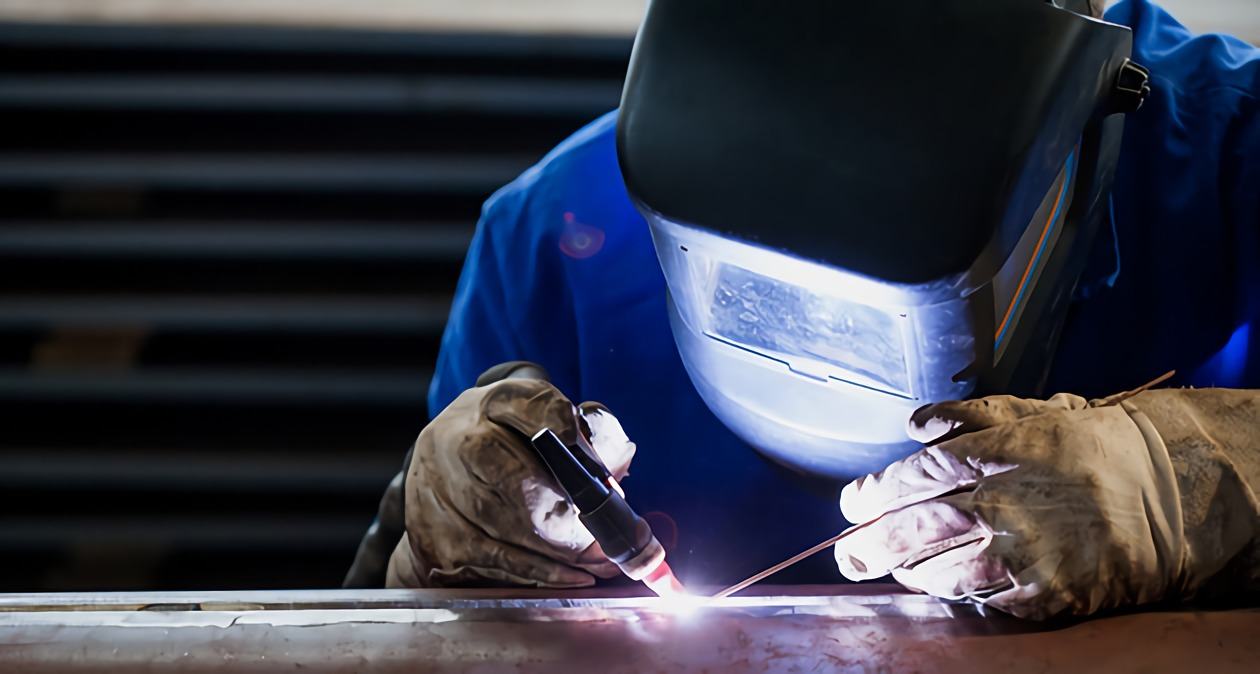TWS is a Great Training Option for Everyone
Learn more about how we can prepare you to advance your career.
Each day, welders are employed to make motor vehicles, ships and aircraft. Welding is used in a variety of construction projects, ranging from skyscrapers to bridges and highways. The assembly of oil and gas pipelines depends on welding. Other energy-related structures such as wind turbines and solar panels could not exist without welding.
A comprehensive welding program can provide the skills necessary to become a welder for anyone who is interested in this career path. Whether one wants to learn how to fabricate support structures for bridges or even prefers to weld metal art, there are certain basic tools that any beginner welder should be familiar with.
Protective Clothing and Safety Gear
The first thing that a welder is taught is to protect their hands. A good pair of welder gloves are imperative for the prevention of hand cuts and burns. It is important that the gloves be thick to protect the skin, but thin enough to be able to pick up small objects. Gloves that are too thick and bulky can get in the way and prevent the welder from working precisely.
Other protective clothing that is needed is a welding helmet, earplugs and safety glasses. A sturdy leather apron can help protect the body from sparks. A dust mask or ventilation device can help keep air pollutants from being inhaled, and additional protective clothing should be worn in situations that involve high temperatures.
Have You Considered a Career in the Skilled Trades?
Fill out the form to recieve a no obligation info packet.
Measurements and Marking Tools
Since welding is a precise skill, the beginning welder should not only invest in a good tape measure, they should also know how to read it correctly. Furthermore, a scriber is needed for etching sharp lines. A soapstone and water-resistant ink marker are also useful tools in order to mark the parts of the metal that will be welded. Also, a paint marker, which is water-resistant can be used as well.
Hammers, Clamps and Wrenches
An assortment of hammers in different shapes and sizes is needed to manipulate the metal for different purposes. For instance, a chipping hammer can be used in stick welding to remove the slag after each weld bead is deposited. C-Clamps are also needed to hold the metal steady while it is being welded. A good adjustable wrench is another important tool for a beginning welder to have for loosening nuts or bolts as well as for grasping metals. The welder that is working with compressed gases will need an adjustable wrench to loosen any nut that might be fastening the regulator between the gas tanks and hoses.
Welding Machines
A beginner welder should take the time to educate themselves on the merits of the different types of welding machines, so that they know which machine to select for a particular welding job. A comprehensive welding training program will prepare aspiring welders to choose appropriate welding machines for different types of welding techniques, whether that is TIG, MIG, stick or oxyacetylene. Multi-process and engine-driven welding machines are less popular, as they are more expensive and are typically used for off-grid specialty work.
Examples of different welding machines include the “buzz box” welder, the AC welder, and the flux-cored wire feed welder. For oxygen-acetylene welding, two high-pressure cylinders and two corresponding pressure regulators are needed. The handle of the torch can accommodate a cutting attachment, heating or welding tip. If one wishes to cut with the torch, you will also need a cutting tip to control the thickness of the metal being cut.
Additional tools that you should consider for your equipment are a cutting torch, drilling tools, brushes, hand files, and a vice. An investment in the right welding tools for the job you’re doing will quickly turn you from a beginner to a top-notch welder.
This blog has been labeled as archived as it may no longer contain the most up-to-date data. For a list of all current blog posts, please visit our blog homepage at https://www.tws.edu/blog/







